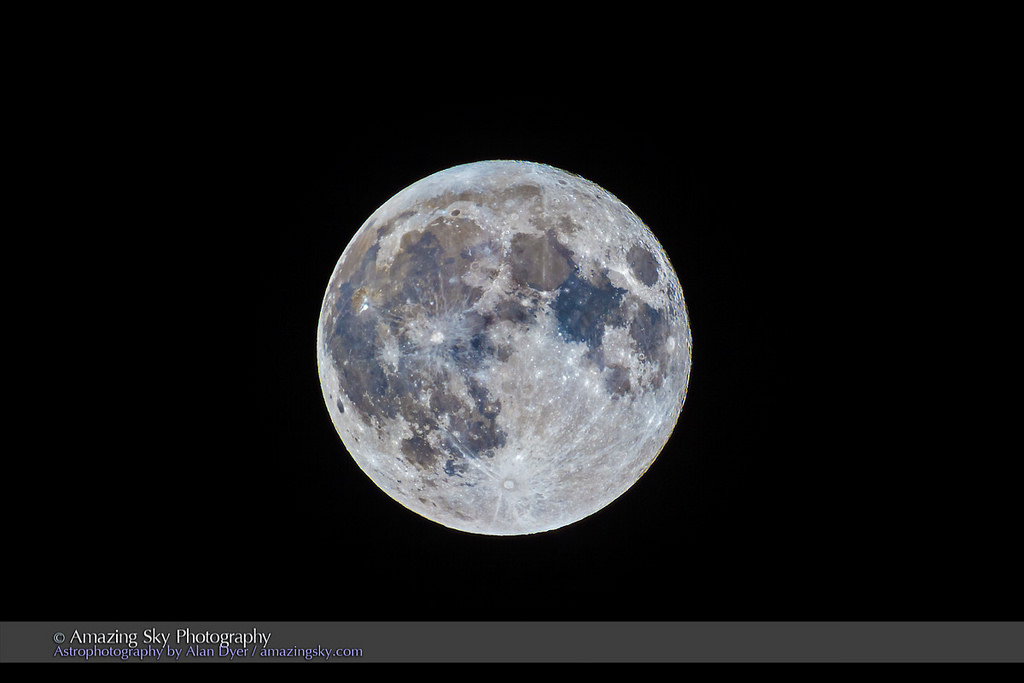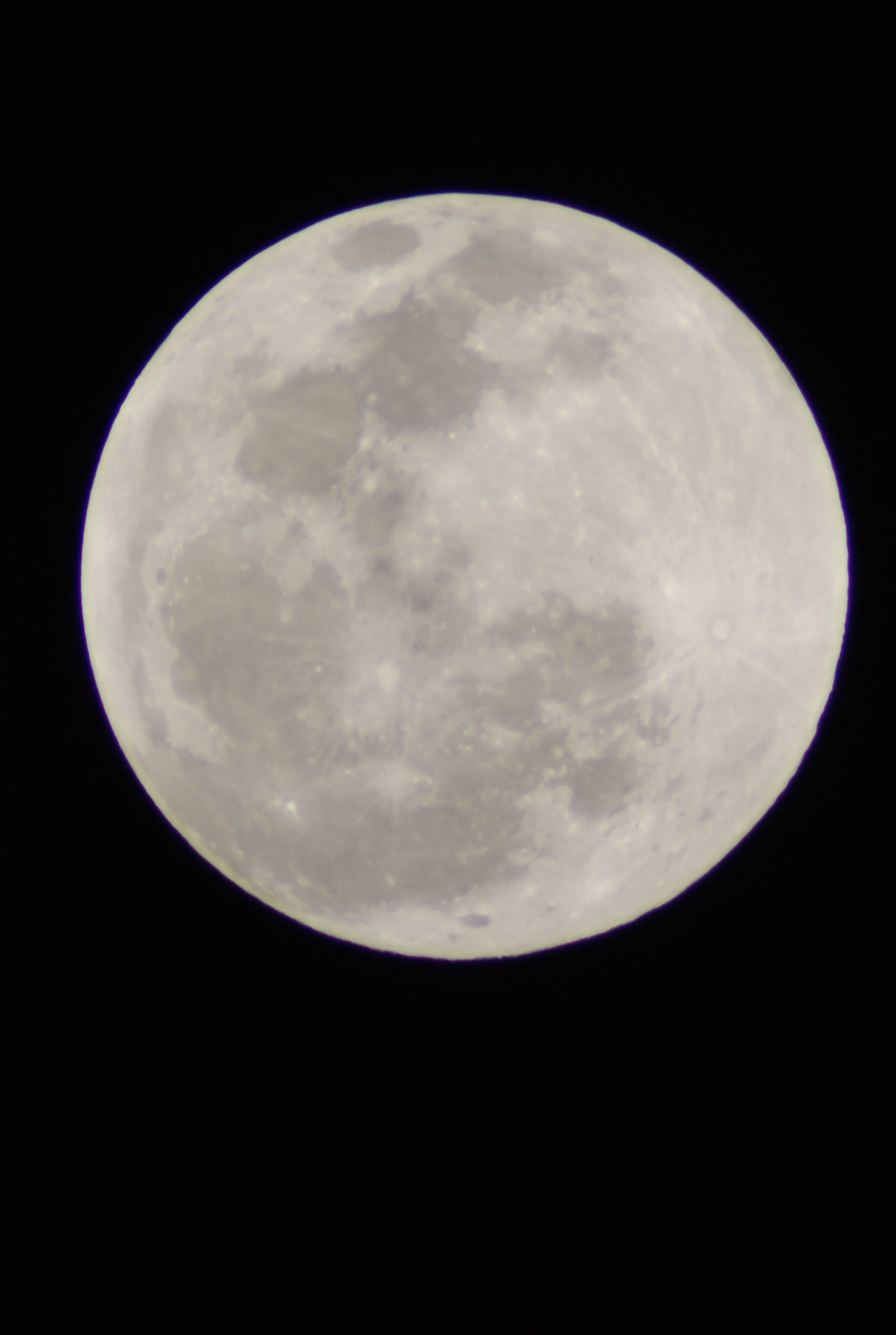For a little over a month now, the Earth has been joined by a new ‘mini-moon.’ The object is an asteroid that has been temporarily accompanying Earth on its journey around the Sun. By 25th November it will have departed but before then, astronomers across the world have been turning their telescopes to study it. A new paper of 2024 PT5 reveals its basaltic nature – similar to volcanic rocks on Earth – with a composition that makes it similar to lunar material. There have been many close encounters to Earth allowing many of its secrets to be unveiled.
Continue reading “Here’s What We Know About Earth’s Temporary Mini-Moon”Earth Will Have a Tiny New Mini-Moon for a Few Months
The Moon has inspired poets and artists, musicians and playwrights. The sight of our one and only Moon is familiar to anyone that has ever glanced up at the night time (and sometimes day time sky!) Every so often though, our Moon (note the use of capital ‘M’)is joined by a small asteroid that wanders too close. Astronomers have detected an 11-metre wide asteroid that has the snappy name 2024 PT5 and it came within 567,000 kilometres of Earth and will become a temporary satellite from 29 September until 25 November when it will leave our system.
Continue reading “Earth Will Have a Tiny New Mini-Moon for a Few Months”April Lunacy: Getting Ready for the Full ‘Mini-Moon’
Do you welcome the extra evening light of the Full Moon, or curse the additional light pollution? Either way, this week’s Full Moon on Friday April 22nd is special. It’s the smallest Full Moon of 2016, something we here at Universe Today have christened the Mini-Moon.
Mini-Moon 2016: This year’s Mini-Moon falls on April 22nd at 5:25 Universal Time (UT), just 13 hours and 19 minutes after lunar apogee the evening prior at 16:06 UT on April 21st. Though apogee on the 21st is 406,350 km distant – a bit on the far end, but the third most distant for the year by 300 km — this week’s Full Moon is the closest to apogee for 2016 time-wise. The 2015 Mini-Moon was even closer, in the 10 hour range, but you’ll have to wait until December 10th, 2030 to find a closer occurance.
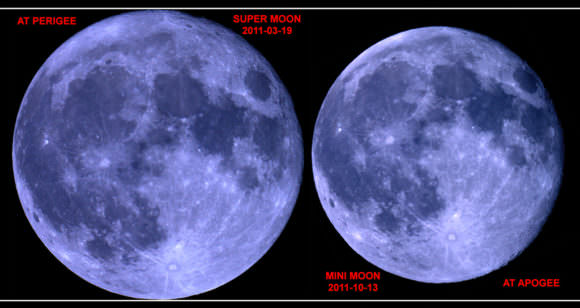
What is the Mini-Moon, you might ask? As with the often poorly defined Supermoon, we like to eschew the ambiguous ‘90% of its orbit’ definition, and simply refer to it as a Full Moon occurring within 24 hours of lunar apogee, or its farthest point from the Earth in its orbit.
Fun fact: the 29.55 day period from perigee to perigee (or lunar apogee-to-apogee) is known as an anomalistic month.

Thank our Moon’s wacky orbit for all this lunacy. Inclined 5.14 degrees relative to the ecliptic plane, the Moon returns to the same phase (say, Full back to Full) every 29.53 days, known as a synodic month. The Moon can appear 33.5′ across during perigee, and shrink to 29.4′ across near apogee.
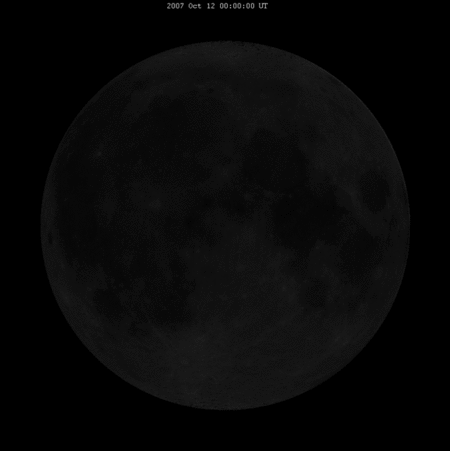
And don’t fear the ‘Green Moon,’ and rumors going ’round ye’ ole internet that promise a jaded Moon will occur in April or May; this is 100% non-reality based, seeking to join the legends of Super, Blood, and Full Moons, Black and Blue.
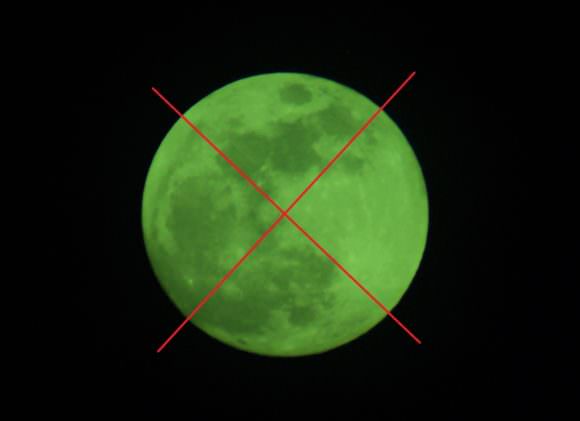
The April Full Moon is also known as the Full Pink Moon to the Algonquin Indians. The April Full Moon, can, on occasion be the Full Moon ushering in Easter (known as the Paschal Moon) as per the rule established by the 325 AD council of Nicaea, stating Easter falls on the first Sunday after the first Full Moon after the fixed date of the Vernal Equinox of March 21st. Easter can therefore fall as late as April 25th, as next occurs on 2038. The future calculation of Easter by the Church gets the Latin supervillain-sounding name of Computus.
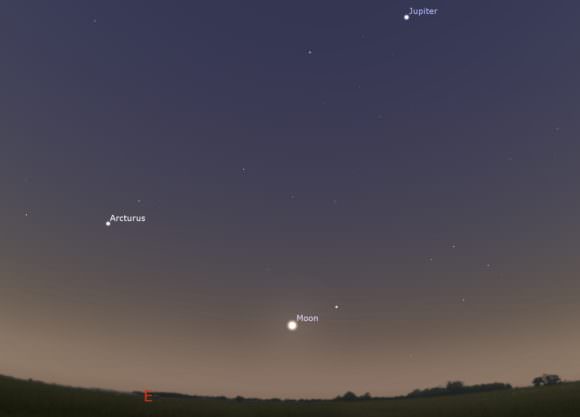
Of course, the astronomical vernal equinox doesn’t always fall on March 21st, and to complicate matters even further, the Eastern Orthodox Church uses the older Julian Calendar and therefore, Easter doesn’t always align with the modern western Gregorian calendar used by the Roman Catholic Church.
The Moon can create further complications in modern timekeeping as well.
Here’s one wonderful example we recently learned of in our current travels. The Islamic calendar is exclusively based on the synodic cycle of the Moon, and loses 11 days a year in relation to the Gregorian solar calendar. Now, Morocco officially adopted Daylight Saving (or Summer) Time in 2007, opting to make the spring forward during the last weekend of March, as does the European Union to the north. However, the country reverts back to standard time during the month of Ramadan… otherwise, the break in the daily fast during summer months would fall towards local midnight.
You can see a curious future situation developing. In 2016, Ramadan runs from sundown June 5th, to July 4th. Each cycle begins with the sighting of the thin waxing crescent Moon. However, as Ramadan falls earlier, you’ll get a bizarre scenario such as 2022, when Morocco springs forward on March 27th, only to fall back to standard time six days later on April 2nd on the start of Ramadan, only to jump forward again one lunation later on April 30th!
Morocco is the only country we’ve come across in our travels that follows such a convoluted convention of timekeeping.
Fun fact #2: the next ‘Mini-Moon’ featuring a lunar eclipse occurs on July 27th 2018.
And the Spring Mini-Moon sets us up for Supermoon season six months later this coming October-November-December. Though lunar perigees less than 24 hours from Full usually occur as a trio, an apogee less than 24 hours from Full is nearly always a solitary affair, owing to the slightly slower motion of the Moon at a farther distance.
Don’t miss the shrunken Mini-Moon rising on the evenings of Thursday April 21st and Friday 22nd, coming to a sky near you.
Weekly Space Hangout – January 17, 2014: Astronomers Without Borders, & Jelly Donuts
Host: Fraser Cain
Guests: Mike Simmons from Astronomers without Borders, Nicole Gugliucci, Jason Major, Casey Dreier, Brian Koberlein, Nancy Atkinson, Morgan Rehnberg, David Dickinson
Continue reading “Weekly Space Hangout – January 17, 2014: Astronomers Without Borders, & Jelly Donuts”
A “MiniMoon” Seen Around the World
So, did last night’s Full Wolf Moon seem a bit tinier than usual? It was no illusion, as avid readers of Universe Today know. As we wrote earlier this week, last night’s Full Moon was the most distant for 2014, occurring just a little under three hours after apogee.
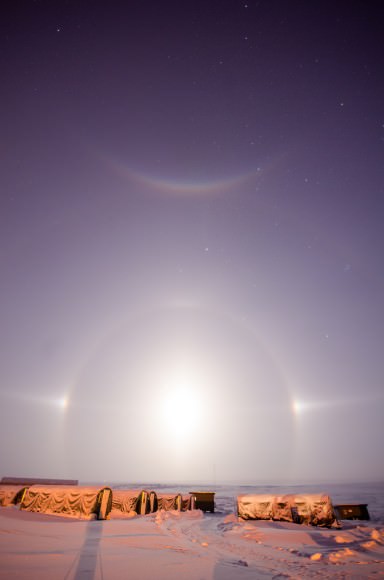
Sure, the Moon reaches apogee every lunation, at a distance nearly as far. In fact, the Moon at apogee can be as far as 406,700 kilometres distant, and last night’s apogee, at 406,536 kilometres, is only the second farthest for 2014. The most distant apogee for 2014 falls on July 28th at 3:28 Universal Time (UT) at just 32 kilometres farther away from our fair planet at 406,568 kilometres distant.
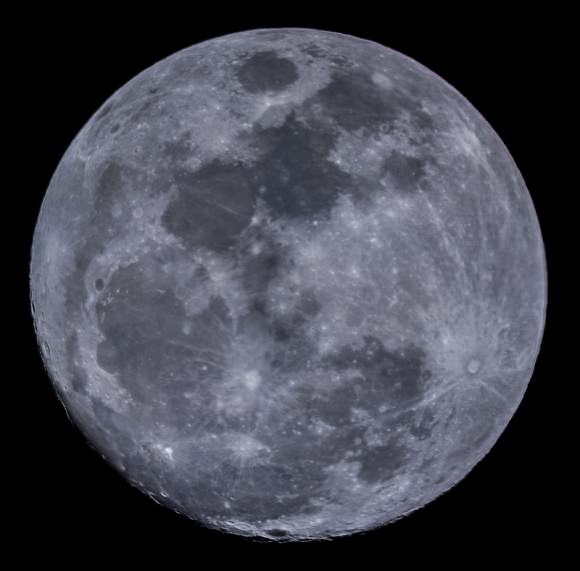
What made last night’s MiniMoon special was its close proximity in time to the instant of Full phase. The July 2014 apogee, for example, will occur just a day and four hours from New phase.
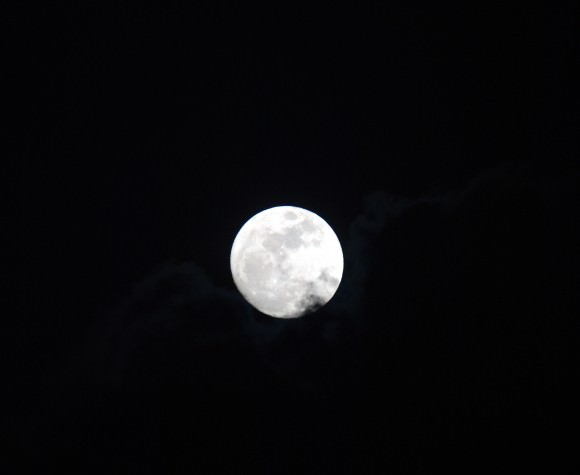
Of course, it isn’t the Moon that’s doing the shrinking, though you’d be surprised the stuff we’ve seen around ye ole Web even on reputable news sites over the past week. The variation of the apparent size of the Full Moon does make for an interesting study in perception. The Moon varies in size from apogee to perigee from about 29.3’ across to 34.1’. This is variation amounts to 14% in apparent diameter.
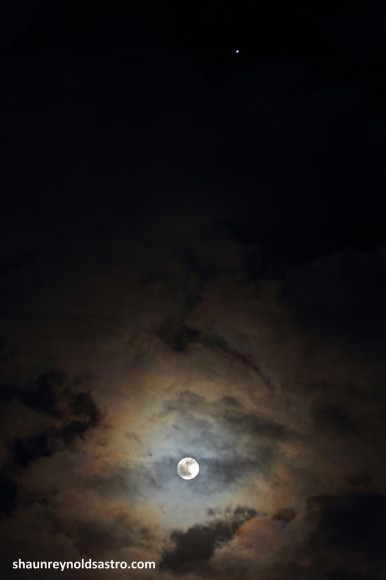
Here’s an interesting challenge that you can do for a one year period, requiring just a working set of eyes: observe the Full Moon for 12 successive lunations. Can you judge which one was the “SuperMoon” and which one was the “MiniMoon” without prior knowledge?
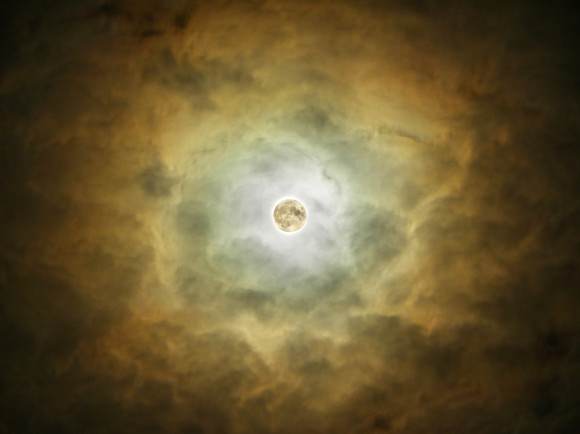
And as you can see, we also got plenty of pictures here at Universe Today from readers of the Mini-Moon from worldwide.
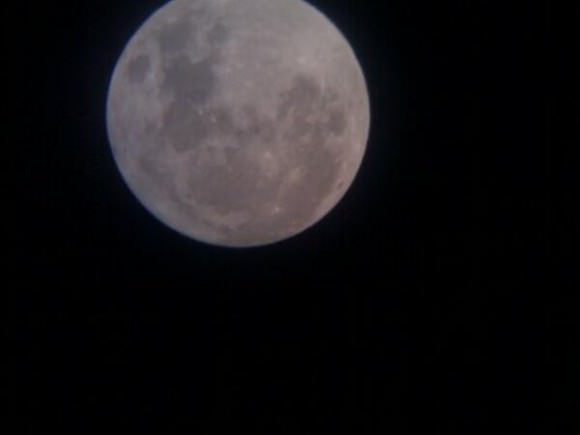
The rare occurrence of an “Extreme-MiniMoon” — or do you say “Ultra?” — also sparked a lively discussion about the motion of the Moon, how rare this event is, and when it was last and will next be surpassed. A fun online tool to play with is Fourmilab’s Lunar Apogee and Perigee Calculator. Keep in mind, the motion of the Moon is complex, and accuracy for most planetarium programs tends to subside a bit as you look back or forward in time. The distances used in Fourmilab’s calculations are also geocentric, accounting for the center-to-center distance of the Earth-Moon system.
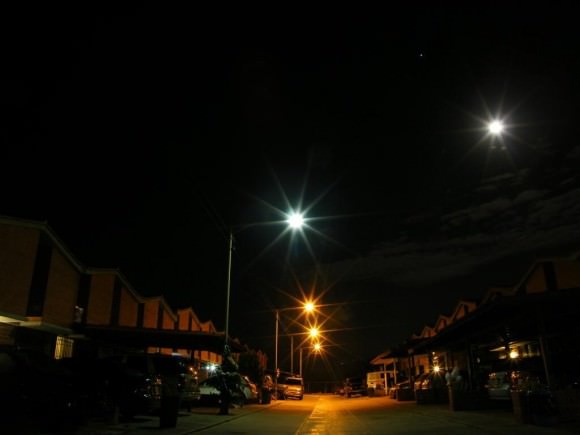
Suffice to say, this year’s Full MiniMoon was the most distant for several decades before 2014 or after.
Anthony Cook of the Griffith Observatory notes that JPL’s Horizons web interface gives a max distance for the Moon of 406,533 kilometres at 1:35 UT earlier today, 3 hours and 19 minutes prior to Full.
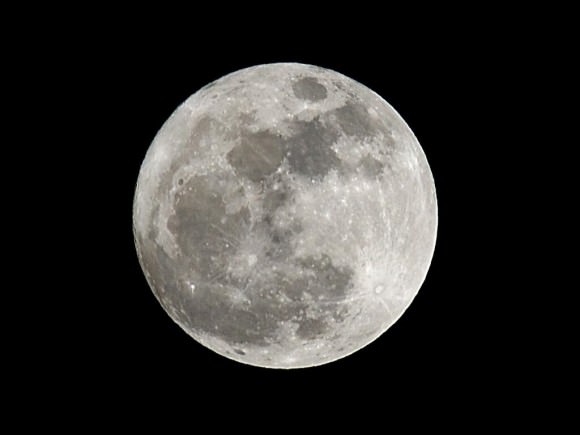
The next closest spread of apogee versus perigee occurs on November 18th, 1994 at 1 hour and 51 minutes apart, and 2014’s Mini-Moon won’t be surpassed in this regard until May 13th, 2052. Looking at the distances for the Moon on these dates using Starry Night, however, we get an slightly closer occurrence of 406,345 kilometres for 1994 and 406,246 kilometres for 2052.
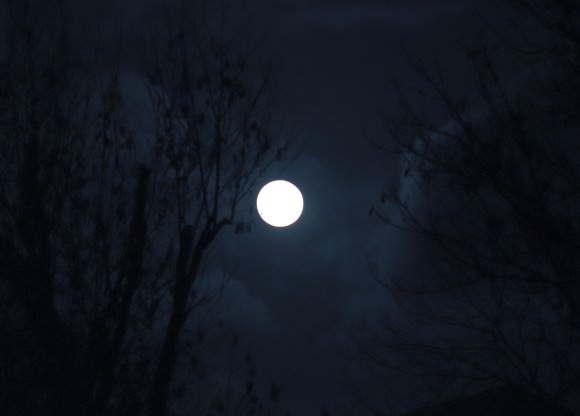
And to top it off, the 1994 Mini-Moon was during a partial penumbral eclipse as well… we’ll leave that as a homework assignment for the astute readers of Universe Today to calculate how often THAT occurs. It should be fairly frequent over the span of a century, as the Moon has to be at Full phase for a total lunar eclipse to occur.
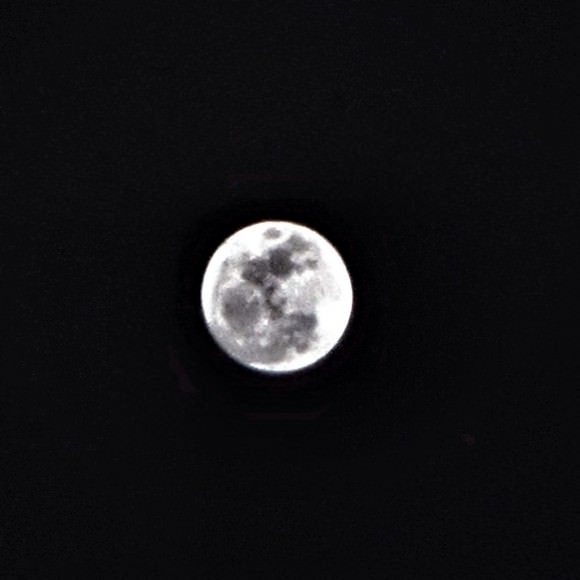
Looking over a larger span of time, @blobrana notes on Twitter that closer occurrences of apogee versus Full Moon with the same approximate circumstances as 2014 also occurred on October 29th 817 AD (with a 1 hour and 38 minute difference) and won’t occur again until December 20th, 2154. If research can prove or disprove that these events were even more distant, then the 2014 Extreme MiniMoon was a millennial rarity indeed…
Perhaps this won’t be the last we’ve heard on the subject!
Tonight: The Rise of the 2013 “Mini-Moon”
The final Full Moon of 2013 occurs tonight, and along with it comes something special: the most distant and visually smallest Full Moon of 2013.
Why doesn’t the annual “mini-moon” receive the same fanfare and hype that the yearly perigee – or do you say Proxigean to be uber-obscure – “supermoon” does? The smallest Full Moon of the year does appear to have a public relations problem in this regard. But as you’ll see, the circumstances for this week’s Full Moon are no less fascinating.
The exact timing of tonight’s Full Moon occurs at 4:28 AM EST/9:28 Universal Time (UT) on Tuesday, December 17th. This occurs just two days and 14 hours prior to the Moon reaching apogee on December 19th at 6:50PM EST/23:50 UT at 406,267 kilometres distant. This is one of the three most distant apogees of 2013, and the closest to Full for the year. It’s also with 500 kilometres of the most distant apogee than can occur, as the Moon’s apogee can vary between ~404,000 and 406,700 kilometres distant.
Tonight’s Full Moon will have an apparent angular diameter of around 29.8’ arc minutes, just a shade lower than the usual value quoted of around half a degree or 30’. The visual size of the Moon as seen from the Earth varies about 12% from 34.1’ to 29.3’. Also, the Moon is also about half an Earth radius more distant when it’s on the local horizon versus at the zenith overhead!
This is also the closest Full Moon to the December solstice, which occurs four days later on Saturday, December 21st at 12:11 PM EST/17:11 UT. This marks the start of astronomical summer in the southern hemisphere and the beginning of the winter season in the north. Think of tonight’s Full Moon as a sort of “placeholder,” marking the point at which the Sun will occupy during the June solstice on the Gemini-Taurus border.
This all means that tonight’s Full Moon rides high for northern hemisphere residents towards local midnight. But the “Long Night’s Moon” of 2013 is rather lackluster in terms of declination. While it’s the northernmost Full Moon of 2013 at a declination of +18.7 degrees, it’s a far cry from the maximum declination of +28.72 degrees (the angle of the ecliptic plus the tilt of the Moon’s orbit) that it can achieve. This only occurs every 18.6 years and last occurred in 2006 and will happen again around 2025. We’re currently headed towards a shallow minimum for the Moon’s orbit in 2015. Ancient European and Native American cultures both knew of this cycle of high-flying moons.
Not weird enough? The next “most distant Full Moon of the Year” happens only one lunation later on January 16th… within just 2 hours of apogee! Perhaps January’s Full Moon is due notoriety as a “Super-Mini Moon?” Such a pairing of “mini-moons” last occurred on 2004-2005 and will next occur on 2021-2022.
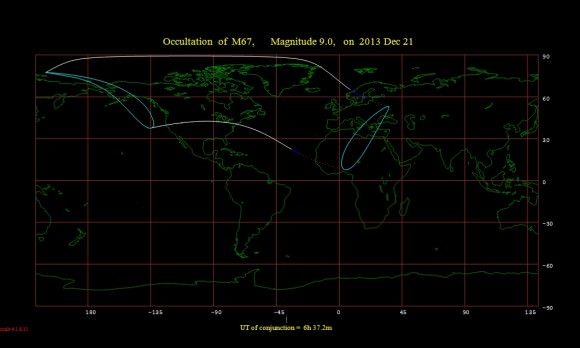
The Moon also visits some other celestial sights this week. After passing five degrees north of Jupiter on December 19th, the Moon heads towards an occultation of the open cluster M67 in the constellation Cancer on December 21st for northern North America. Though the Moon will be waning gibbous, it might just be possible to note the reappearance of the cluster on the Moon’s dark limb. Other occultations for the remainder of December by the Moon include an occultation of Spica on December 27th for northern Asia, Saturn on December 29th for Antarctica, and +3.6th magnitude star Lambda Geminorum for Canada on December 18th.
The passing of the Full Moon also means it will be entering into the morning sky, which also means bad news for viewers of the Ursid meteor shower which peaks on December 22nd and hunters of Comet C/2013 R1 Lovejoy, currently shining at +5th magnitude in the constellation Hercules low in the dawn.
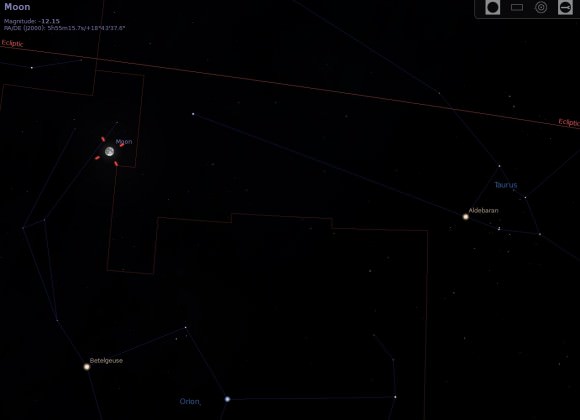
The keen-eyed may notice the Moon also transits through the northern end of the non-zodiacal constellation of Orion on Tuesday, December 17th. Did you know that the Moon can actually stray far enough away from the ecliptic to cross through 18 constellations? The Six non-zodiacal constellations it can transit are: Orion, Ophiuchus, Corvus, Sextans, Auriga and Cetus.
Other names for the December Full Moon include the Yule, Oak, and Cold Moon.
Finally, a new Earthly ambassador is now roaming the lunar surface.
China’s Chang’E-3 spacecraft landed on the Moon just outside of the Bay of Rainbows (Sinus Iridum) near Montes Recti in the northern section of the Mare Imbrium on Saturday, December 14th. The landing site is visible now on the lunar nearside, and can be seen with that new Christmas telescope you’ve been itching to try out. Look for the Sinus Iridum as a wide crescent scarp, a sort of “notch” in the top of Mare Imbrium:
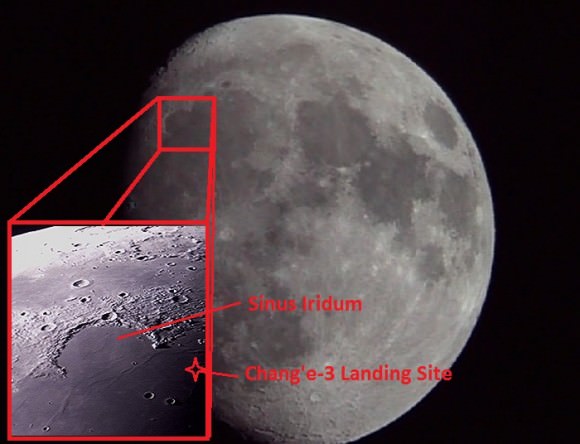
China’s Yutu or “Jade Rabbit” rover has been beaming back some splendid images of the lunar surface!
So don’t let the cold temperatures deter you from exploring the lunar surface, and the strange but fascinating motions of our nearest natural celestial neighbor. Dress warm and be sure this Christmas season to raise a glass of ye ole Nog to the Solstice/Yule Moon.



